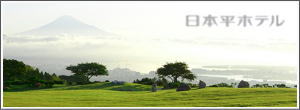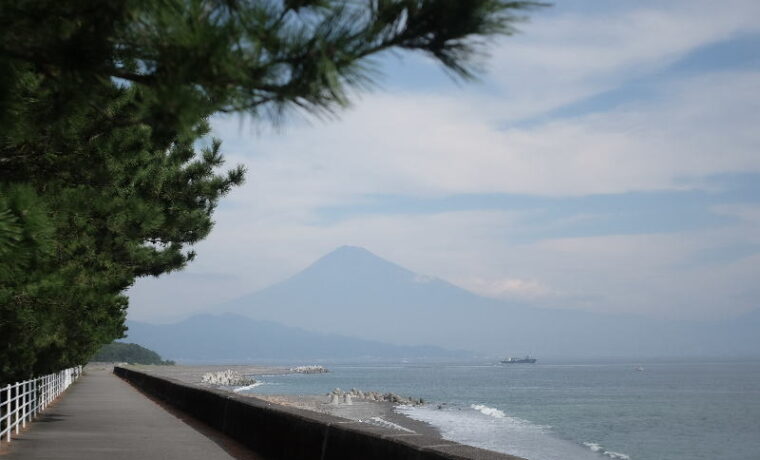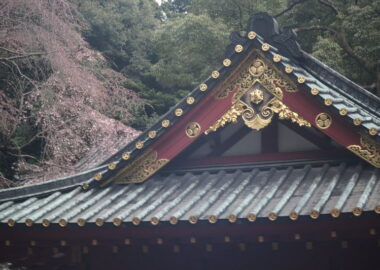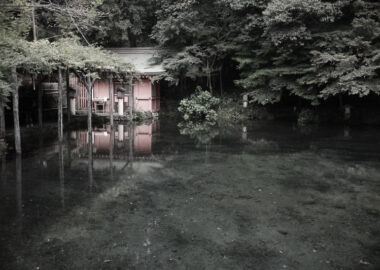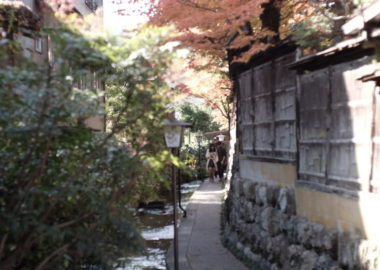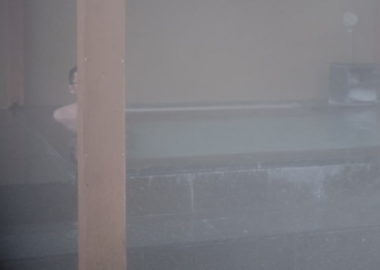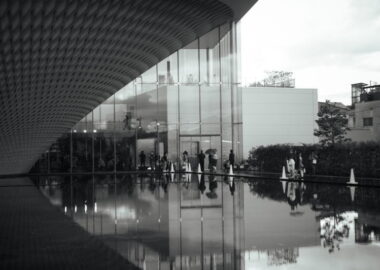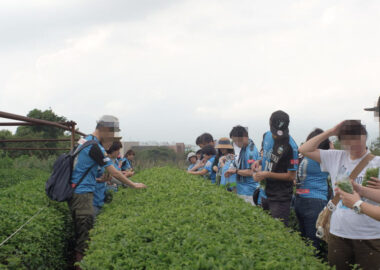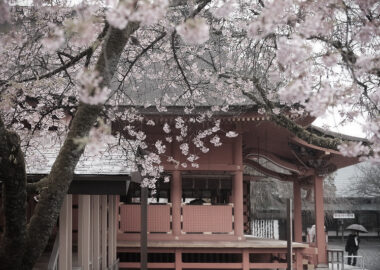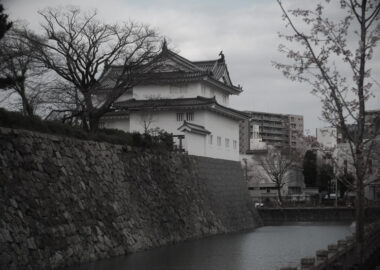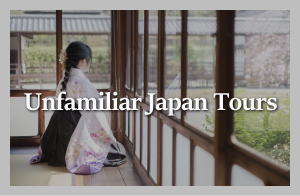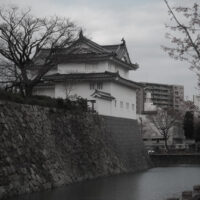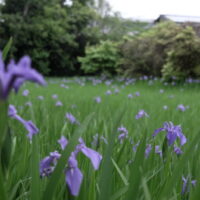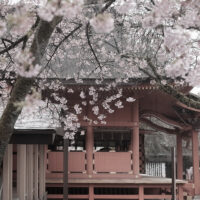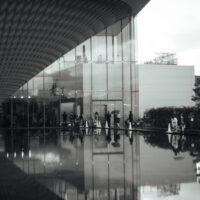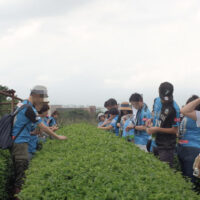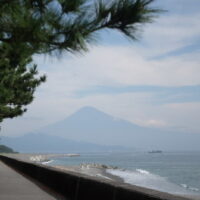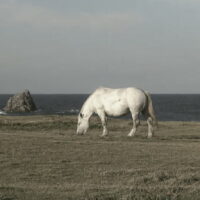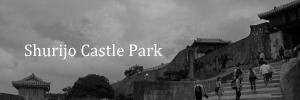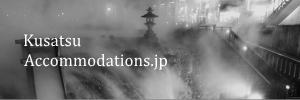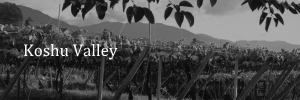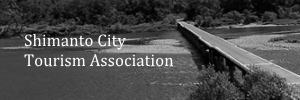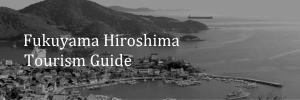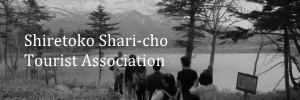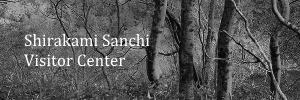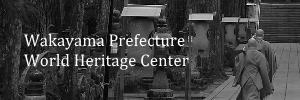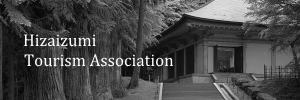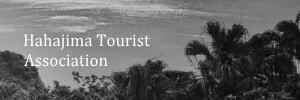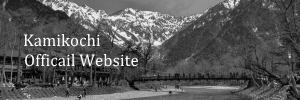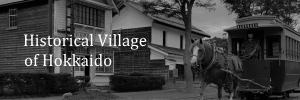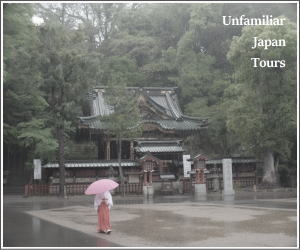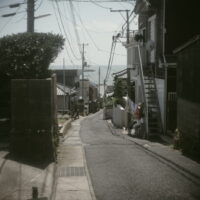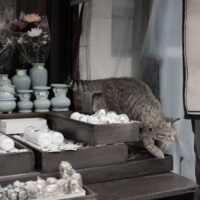Miho no Matsubara, or the Pine Grove in Miho, is a pine-fringed beach with Mount Fuji views. It has long been known as a place of scenic beauty. And it is actually a nationally designated scenic area in Shizuoka Prefecture (in the Chubu Region). The pine grove stretches about 7 km (4.3 miles) along the Miho Peninsula and has over 30,000 pieces of Japanese black pine trees.
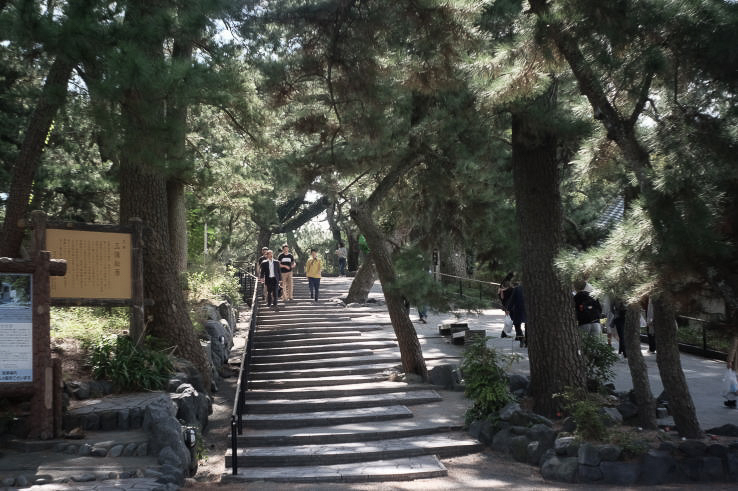
We Japanese have an old expression, Hakusa Seishou (白砂青松), which literally means “white sand and green pines.” It is a term describing the beauty of pine trees lined along a white sea shore. And we can see from the term how our ancestors loved and valued this kind of natural beauty from a long time ago (well, I know some people say that the sand of Miho beach is not that “white” nowadays, but I hope you will use your imagination).
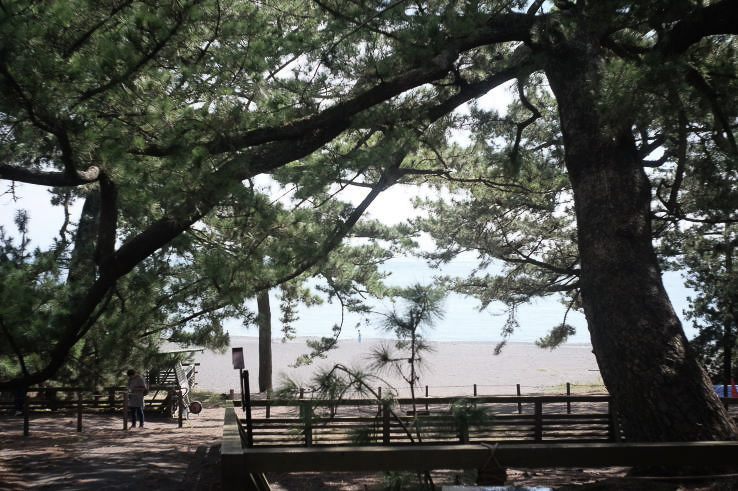
Miho no Matsubara was chosen as one of the “New Three Views of Japan” in 1916 along with Onuma Quasi-National Park in Hokkaido and Yabakei Gorge in Oita Prefecture (Kyushu Region). It is also considered to be one of the “three outstanding pine groves of Japan” along with Rainbow Pine Grove in Saga Prefecture (Kyushu Region) and Kehi Pine Grove in Fukui Prefecture (Chubu Region).
UNESCO World Heritage
However, the recent popularity of this pine grove really came about when became a UNESCO World Heritage Site in 2013 as one of Mt. Fuji’s ‘component parts’. Since then, the number of tourists increased. And the city even moved the location of the bus parking lot to a distance of about 500 meters from the entrance of the beach. They did so because they found that the exhaust fumes from large buses were causing a harmful effect on the pine trees.
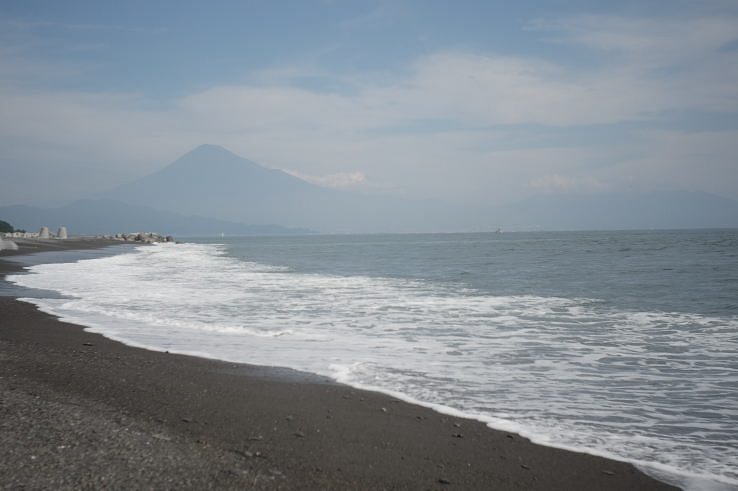
Here is a question: Why did they choose Miho no Matsubara as one of Mount Fuji’s component parts, even though these two scenic spots are 40 km (27 miles) apart from each other? The main reason is that ‘cultural connections’ between them were strongly considered. The grove and Mount Fuji have often been depicted together in various art forms, including ukiyo-e works by Hiroshige, paintings by some famous artists and Japanese traditional waka poems. In addition, there is a religious painting called “Fuji Mandala” created in the Middle Ages, and Miho Pine Grove is included in it as if it is a part of a religious pursuit to reach the sacred Mount Fuji.
Legend of Hagoromo
Miho no Matsubara is also known for the ‘legend of Hagoromo’. Hagoromo (feather robe) is an article of clothing worn by a celestial maiden in a folk tale. Researchers consider this folk tale has been around since at least the eighth century. Although there are some variations to it, one of the stories (the ‘Miho version’) goes like this: Once upon a time, there lived a fisherman named Hakuryo in Miho. One day, as usual, he was fishing near the pine grove.
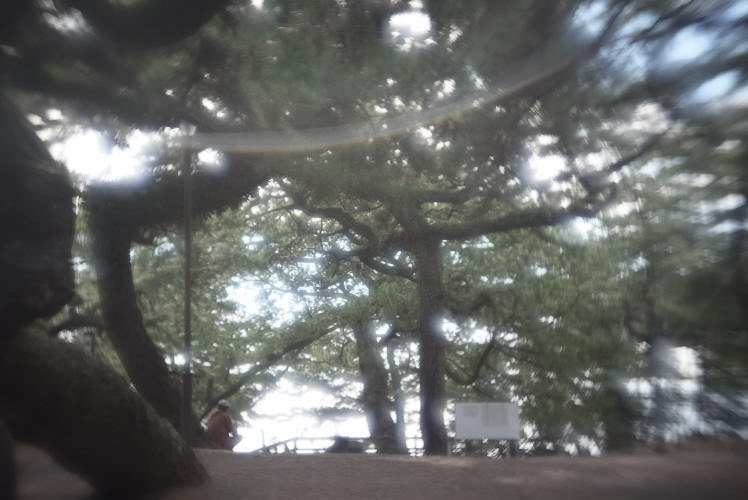
Then he noticed a beautiful robe hanging from a branch of a pine tree. It was such a beautiful and unusual robe that he thought about bringing it back to his home. He was about to take it and head for his home when a voice called out to him to stop. There is a beautiful lady standing in the shadow of a pine tree.
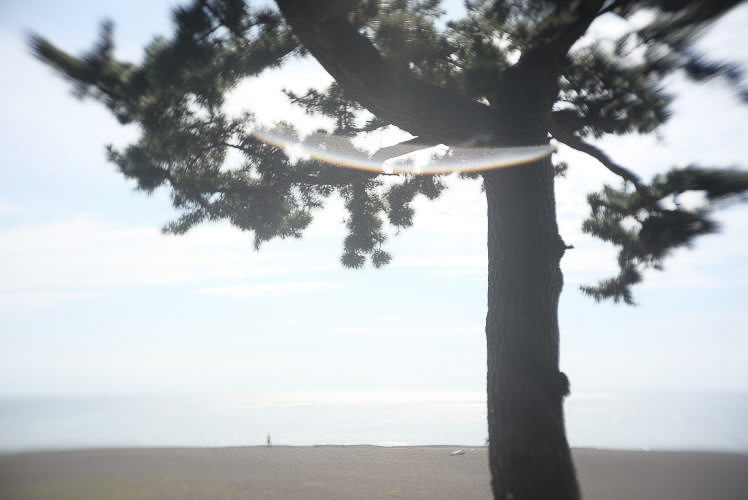
She said, “I am a celestial maiden, and that hagoromo belongs to me. I have just descended here to frolic because the scenery around here is so beautiful. Please give it back to me! I can’t go back to my world above without it!” She looked sad, so Hakuryo gradually felt sorry for her. He said, “OK. I will give it back to you, but in exchange, you have to dance a celestial dance for me.” And he returned it to her.
Dressed in her hagoromo robe, she looked glad and began to dance gracefully. Then she started to float in the air, gradually getting higher right before his eyes, and, mixing with a spring mist, finally vanished into the air in the direction of Mt. Fuji.
Helene Giuglaris
The Hagoromo legend set in Miho was adapted into a Noh play in the Muromachi Period (1338-1573). Since then, it has become one of the most popular and frequently performed Noh dramas. But it is not well-known that this Noh play inspired a sort of cultural exchange between Japan and France in the 1950s.
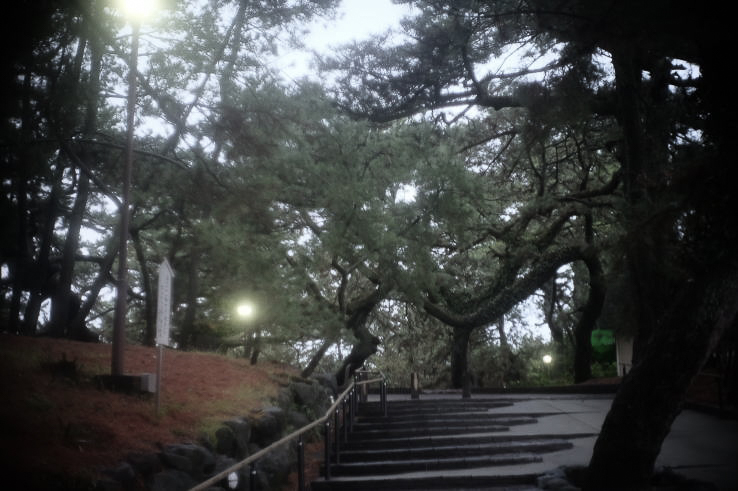
In the early 20th century, there was a dancer in France who was passionately studying the Noh play Hagoromo. Her name was Helene Giuglaris. Born in the Brittany region in 1916, she is said to have been taught the basics of dance from Isadora Duncan, a legendary American dancer, sometimes described as ‘the founder of modern dance’. Influenced by Duncan, she grew up to pursue her own style of dance and stage art, and along the way, she discovered Japanese Noh dramas.
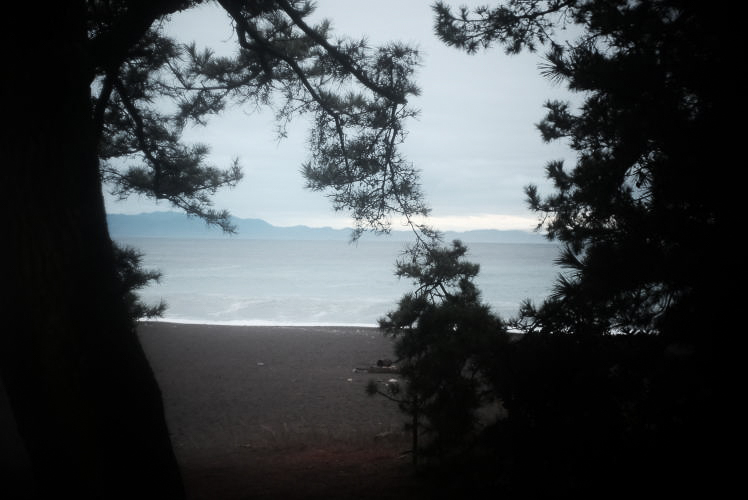
She was especially into the Hagoromo play based on the Hagoromo legend in Miho. And she started research to perform her own Hagoromo on stage. That was in the 1940s. Due to the paucity of information about things in Japan at that time, it must have been difficult for her to do research, and it also cost her an enormous amount of money to obtain stage costumes, Noh masks, and other stage props.
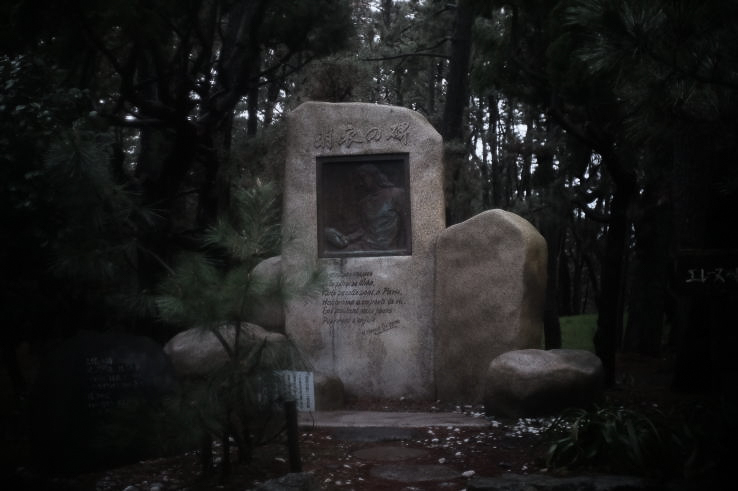
But at last she succeeded in performing Hagoromo for the first time in the hall of the Guimet Museum in 1949 to acclaim, and she went on to tour France with it. But it was during this tour that a terrible tragedy struck her. During a show, she suddenly fell down on stage and was carried to the hospital; and without ever returning to the stage again, she passed away in 1951 at the age of 35 from leukemia.
Erection of the Monument
Visiting Miho, the birthplace of the Noh play, was her lifelong dream. So after her death, her husband, Marcel, her hair and stage costumes with him, visited Japan in her stead, and consoled her soul in Miho. And this story moved the hearts of local residents in Shimizu so deeply that they planned to erect a monument to commemorate her.
With the help of donations from local people, the monument was completed in November 1952, and was erected near the legendary Hagoromo Pine Tree on Miho beach. The relief embedded in the monument is a work by Kyoko Asakura, a Japanese female sculptor, and it depicts Helene gazing at a Noh mask. And beneath the relief, a six-line poem written by Marcel is inscribed.
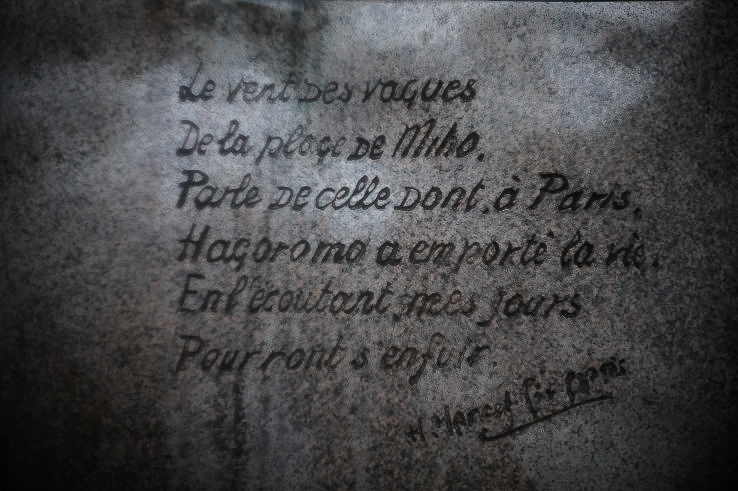
Many people, including the French ambassador to Japan and the chairman of Japan’s House of Representatives, attended the unveiling ceremony of the monument. And Umewaka Manzaburou (who subsequently became a Living National Treasure) and his theater troupe performed the Noh play Hagoromo.
Years later in 1984, the first Hagoromo Festival was held in Miho, and it has been held every October since then. Festival events include the ceremony in honor of Helene, and an outdoor Noh performance of Hagoromo by the light of bonfire from evening to night.
Japanese Black Pine
There is no doubt that the best time to be in Miho no Matsubara is when we can see the entire figure of Mount Fuji over the pine grove under a clear blue sky. But the mountain doesn’t show us its best every day. Sometimes it is completely covered with the cloud. So, on a rainy or cloudy day, do tourists have no choice but to go back to their hotel half-disappointed after they visit the Pine Grove? I don’t think so, as Miho Pine Grove has its own charms even without the view of Mt. Fuji.
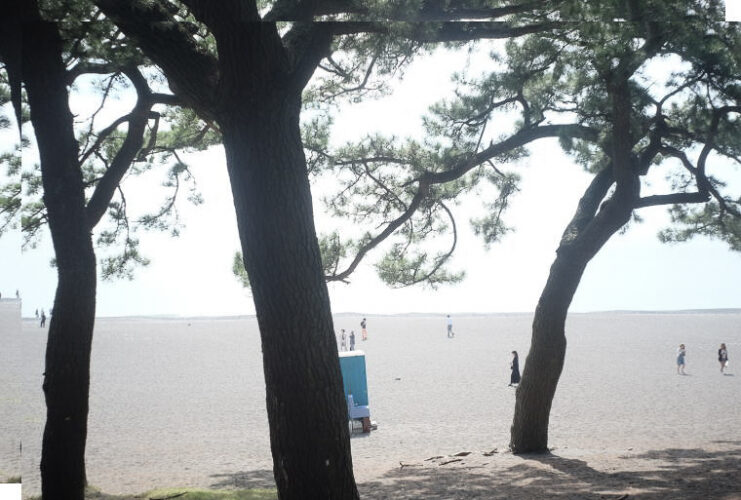
First of all, how about appreciating the beauty and strength of old pine trees? When we first step into the pine grove, we will experience a unique atmosphere, which is solemn, but at the same time refreshing. What surprises us the most is how clean the pine beach is and how well-tended the pine trees are. These are the results of the preservation efforts by local people and organizations.
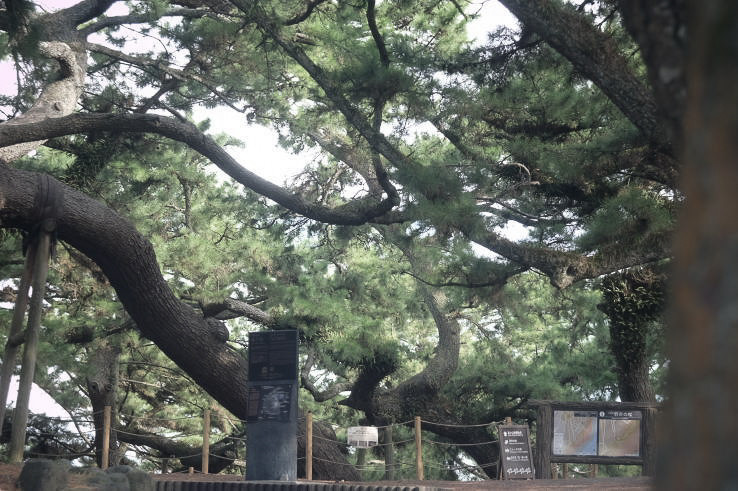
Historically, people have valued the Japanese black pine because of its vigorousness, calling it ‘the king of pine tree’. It has also been considered auspicious because the evergreen color of its leaves, as well as its long life, are suggestive of our perpetual youth and longevity. So we often see it gracing the famous gardens of historical value (some may recall the 2,000 pieces of this variety planted in the Imperial Palace Garden in Tokyo).
The black pine is one of the most popular trees in Japanese bonsai art. And people has used it for various purposes, such as fuel, lumber and food. In those ways, the Japanese black pine has been closely connected with people and culture of Japan. So when you stand amidst the dense pine groves in Miho, you might be able to feel something very Japanese.
Traditional Waka Poems
Next, let me talk about Japanese traditional waka poems. Moho no Matsubara has often been used as subject matter in many waka poems, but not necessarily together with Mount Fuji. For example, the Manyoshu (万葉集), the oldest anthology of waka poems in the eighth century, contains the following waka:
Iohara no
Kiyominosaki no
mihonoura no
yutakeki mitsutsu
monoomoi mo nashi
This waka was composed by a man named Taguchi no Masuhito no Maetsukimi when he visited Kiyominosaki (present-day Okitsu Town which is relatively close to Miho Pine Grove) during his trip to Kamitsukeno no kuni (sometimes pronounced “Kouzuke no kuni,” present-day Gunma Prefecture) where he was appointed kokushi (provincial governor) in the late administrative reform in accordance with the transfer of the capital from Nara to Kyoto in 794.
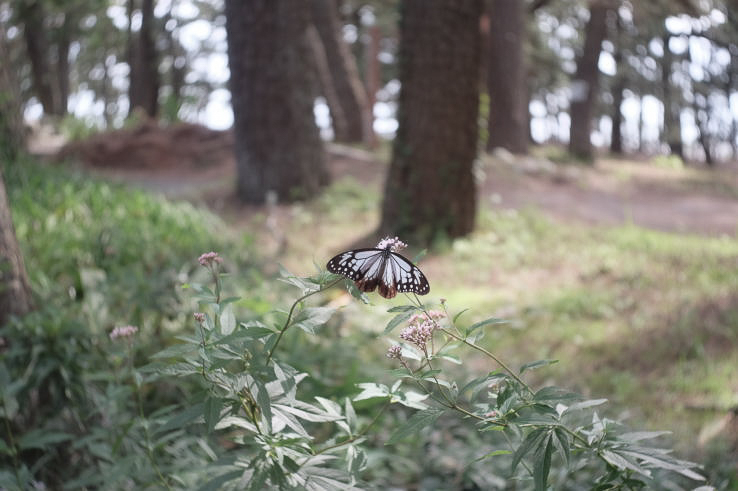
The Taguchi no Masuhito no Maetsukimi’s waka roughly translates:
Viewing the abundance
Of the sea of Miho,
From Kiyominosaki
In Ihara,
There’s no worries in my mind.
It is not clear from this waka whether or not Mt. Fuji was visible on the day of his visit, but at least it is obvious that the sacred mountain did not cross his mind when he composed this poem. I guess that, even if Mt. Fuji was visible that day, it was not the majestic presence of Japan’s highest mountain but the quiet expanse of the beautiful sea that consoled his soul then, because his heart was full of “worries” due to the transfer to a far-away region.
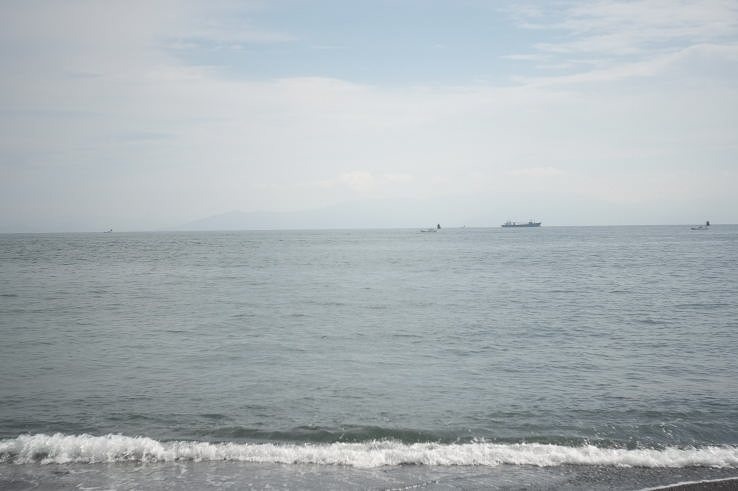
Kitahara Hakushuu also wrote some waka poems about Miho no Matsubara, but more often than not, his focus is on the pine trees, the beach, or ships on the ocean. I like the fact that both Hakushuu and Taguchi no Masuhito no Maetsukimi composed their verses not by including Mount Fuji in the picture but by being purely impressed by the scenic beauty of the beach.
Miho Shrine
Some people think that Miho no Matsubara consists only of the pine grove and the beach. But actually the area designated as an UNESCO World Heritage site is much larger. And it includes some sections that you can enjoy in any kind of weather. Miho Shrine is one of them. Although it is not clear when this Shinto shrine emerged, people has worshipped at it from ancient times and the legendary ‘Hagoromo pine tree’ on Miho beach is the shrine’s sacred tree.
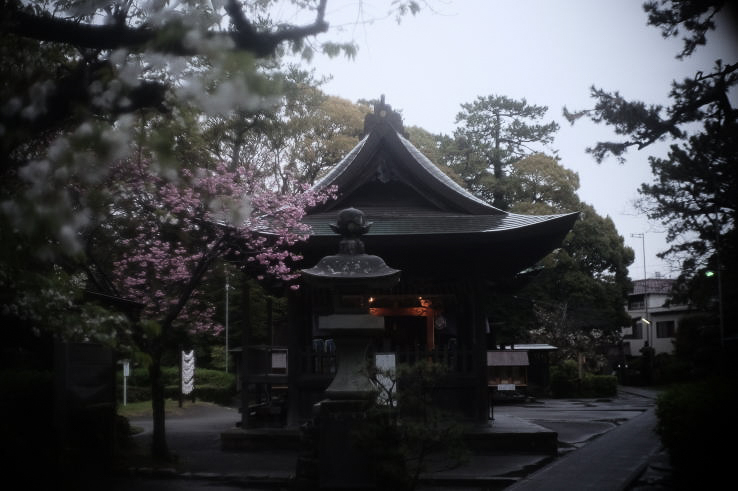
A wooden boardwalk called Kami no Michi (or the ‘Road of Kami’) connects Miho Shrine with the pine grove beach. It spans 500 meters, and large pine trees of well over 200 years old surround it. These places are interesting and worth visiting for their own sakes.
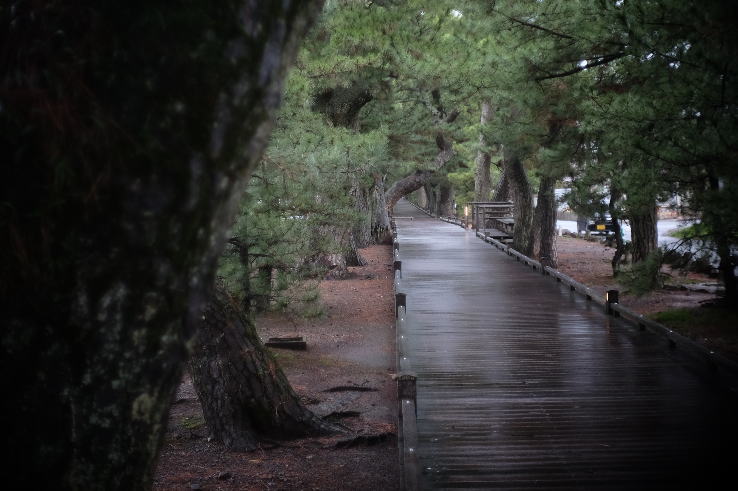
Local Specialties
Miho no Matsubara is also a place where you have a chance to eat (or buy) some of the famous local dishes or snacks from this region. There are a few shops open every day for tourists, and they sell foods such as “Shizuoka oden,” bottles of local sake, matcha ice cream, green-tea coke (aka, “Shizuoka cola”), Fujisan cider and abekawa mochi.
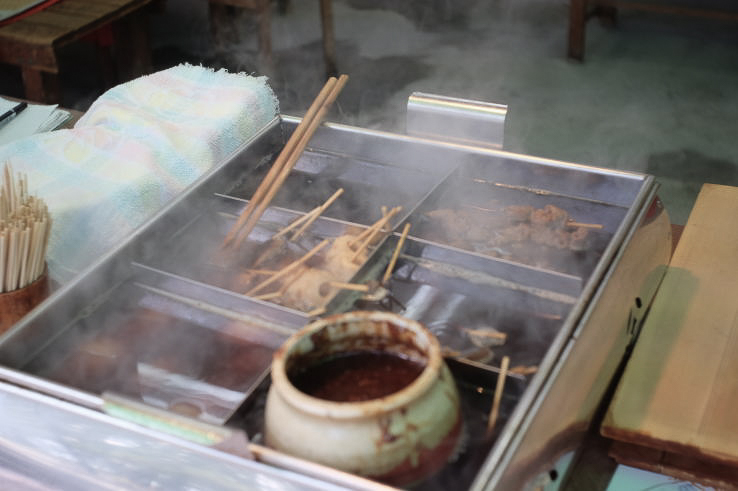
I had a chance to eat ‘shirasu ice cream’ at one of the shops. shirasu (whitebait) is a famous local specialty of this region. In particular, those caught in Suruga Bay (where Miho Pine Grove faces) have a reputation of being delicious.
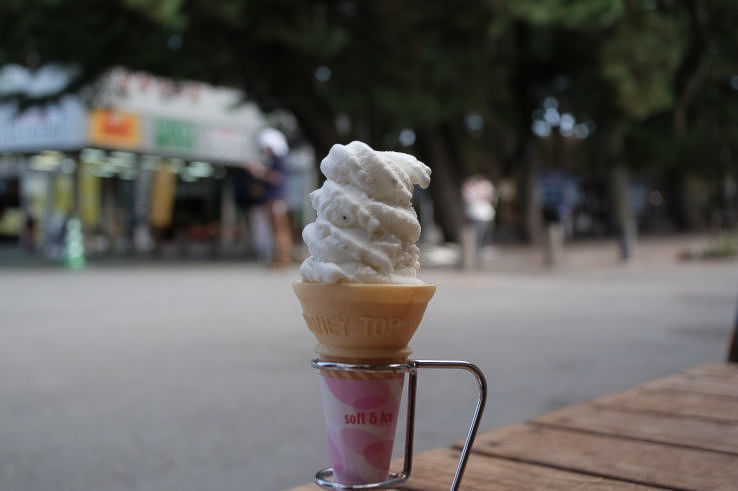
Probably, one of the most popular way of eating shirasu in Japan would be to eat them with boiled rice with soy sauce sprinkled on them. But when they are in an ice cream, the taste becomes ‘interesting’. Chatting with shop attendants might also be fun. (I got permission from the shops to put these photos on this page.)
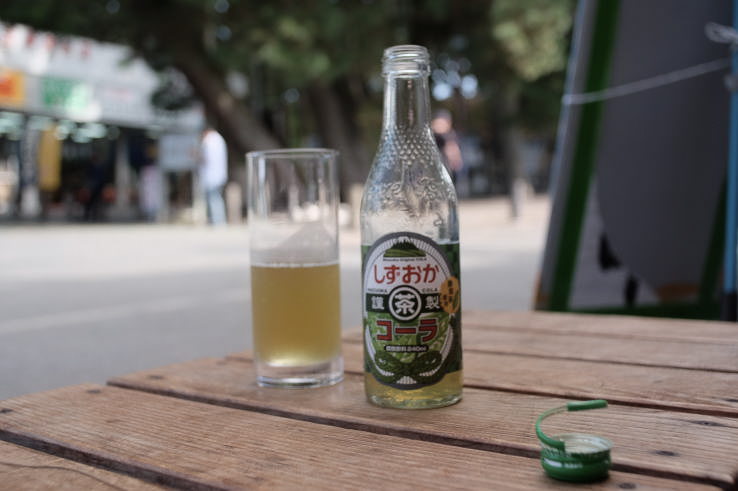
Tourist Information
Also, there is a Tourist Information Center near the central square where you can learn about the past and the present of this particular pine grove through the exhibitions, or can watch the brilliant short video about the grove. If you show your friends a picture of you taken in front of the large panel of Mt. Fuji and the pine grove, they might believe you visited there on a fine day, even though you really didn’t.
Getting There (English Map)
Miho Pine Grove is a 26-minute drive from JR Shizuoka Station and a 13-minute drive from Shimizu Port. Buses run between the port and the grove, but the number of them is not so great and sometimes you need to wait for some time. So, if you can get a rental car or a taxi, it might be more convenient.
Other Photos
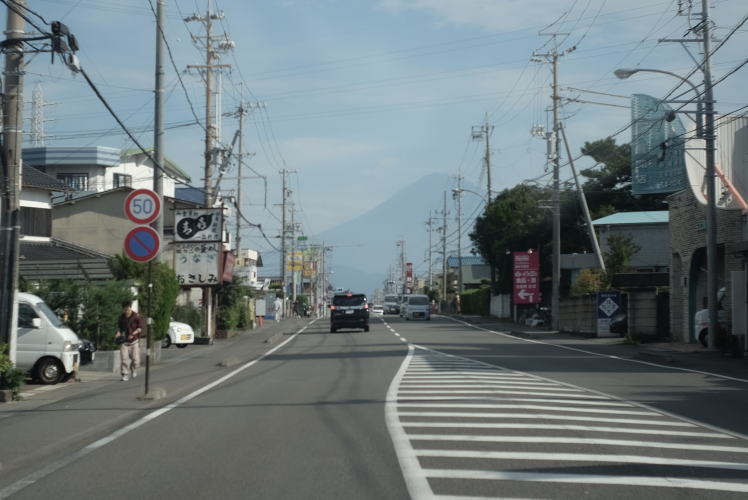
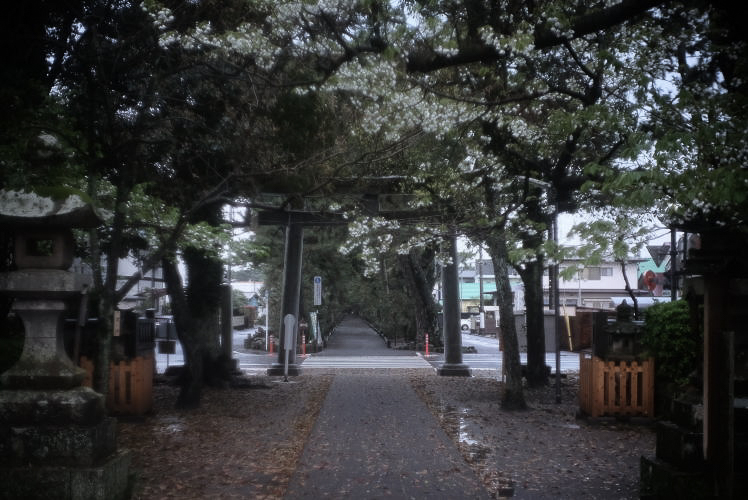
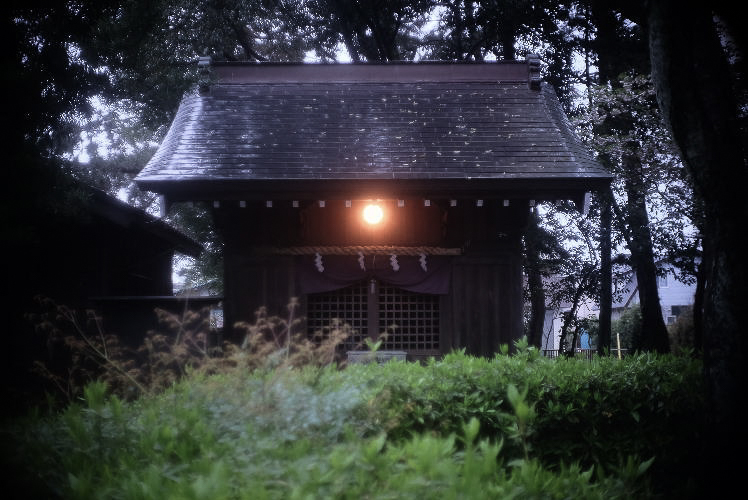
Places Nearby
Miho no Matsubara is close to Kunozan Toshogu Shrine (about a 15-minute drive), which is the only National Treasure shrine Shizuoka Prefecture has. The pine grove is also close to the port of Shimizu where international cruise ships often visit. There are several tourists attractions near the port. Among them, S-Pulse Dream Plaza is very popular. It is a four-storied commercial building that has many shops, restaurants, and amusement facilities.
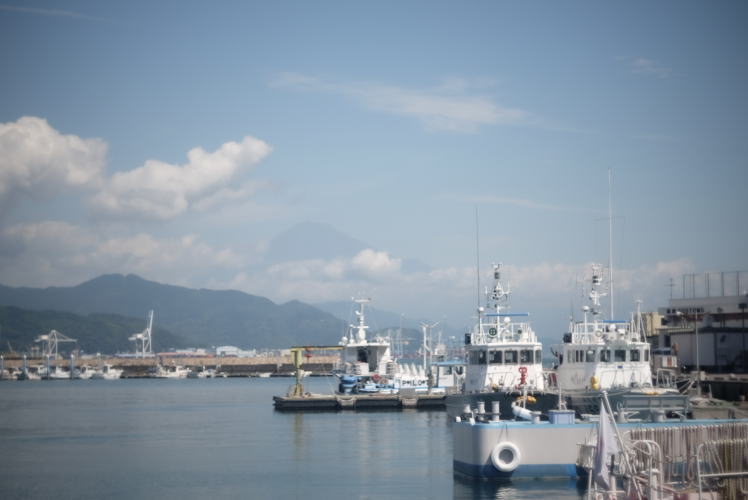
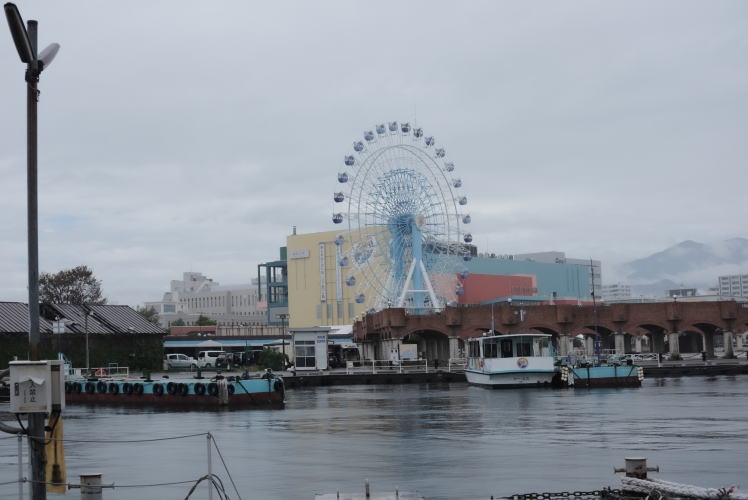
Conclusion
As I mentioned in this write-up, even if Mt. Fuji is not visible, there are still a few things to see and do in the Pine Grove in Miho. Rain or shine either way, your tour guide will tell you some interesting things there. So, if you are thinking about visiting Japan, or if you are going to visit Shizuoka Prefecture (which is in central Japan on the Pacific coast side) on a cruise ship, please send an e-mail through the Rates/Contact page of this site.
Photographs: taken at Miho no Matsubara,
by Koji Ikuma, with Fujifilm X-T1
equipped with various old lenses, including
a Summaron 35mm f3.5 and Xennon 25mm f1.4.
Outbound Links (New Window)

